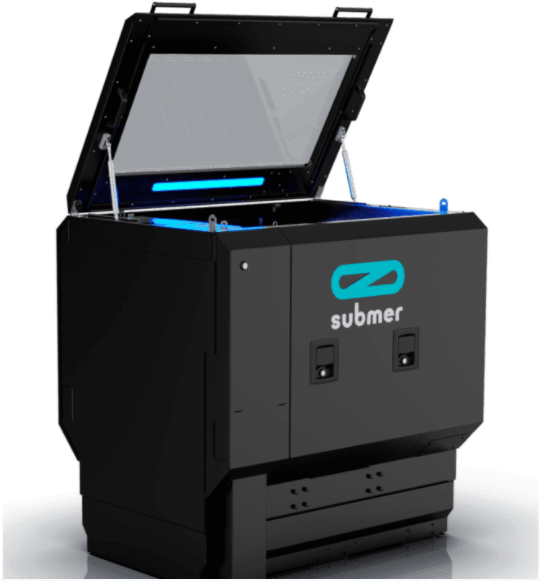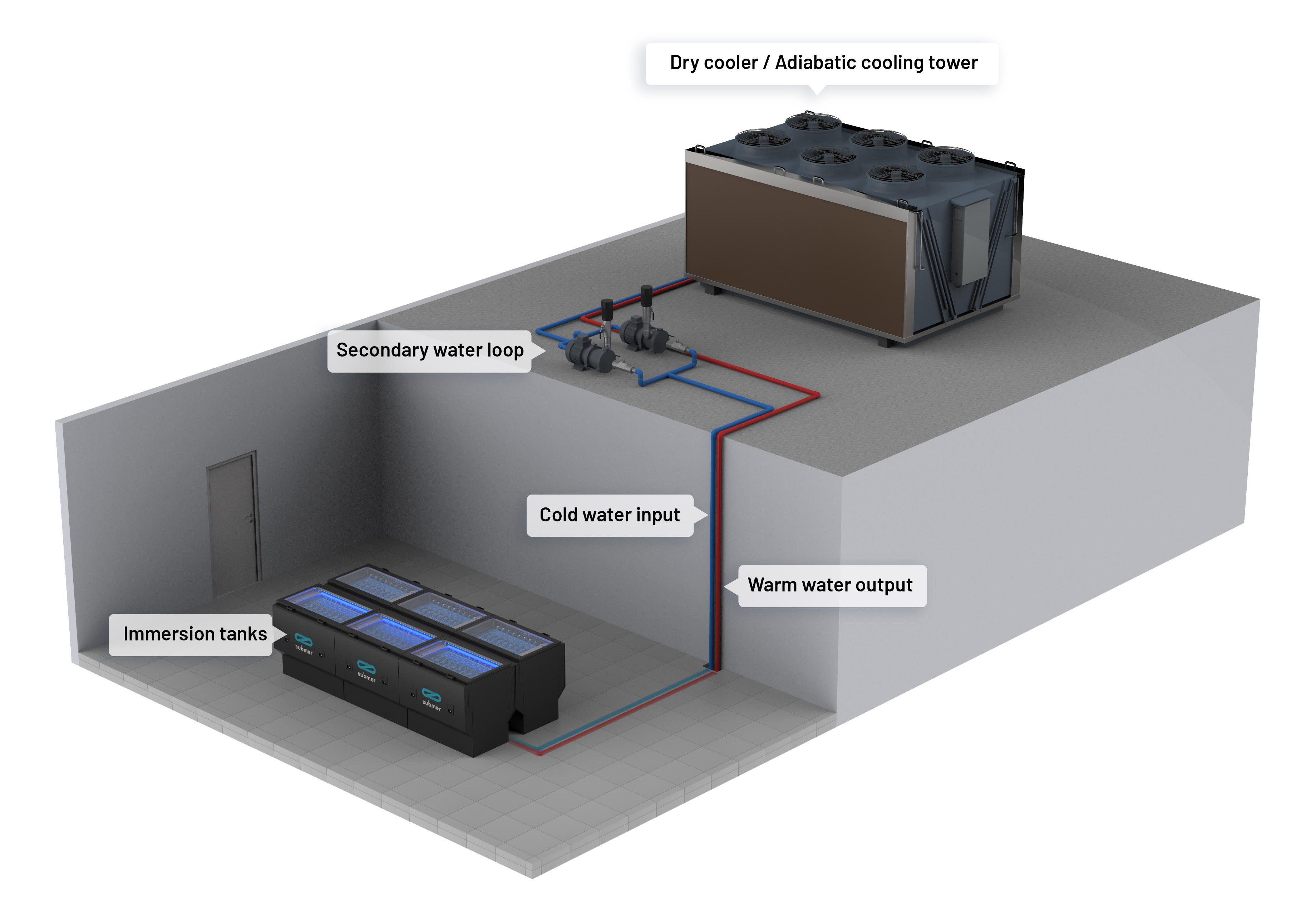
Sept. 1, 2020
By Matteo Mezzanotte, PR, Communication and Content Manager at Submer
DATA AT THE CENTER OF THE SOCIETY
Datacenters can be considered as a sort of nervous system of the contemporary society. Just like the human nervous system, datacenters are not single structures, working on their own. Quite the contrary, “datacenters” are heterogeneous systems with multiple layers of complexity and integration and interaction, internally and externally. This apparently obvious statement should nevertheless be never forgotten because we are entering an era in which datacenters will play a fundamental role in our daily lives. And to make the next digital revolution (in fact, already undergoing), sustainable, we as an industry must find smarter solutions and push the envelope of green innovation. That is what Submer is doing.
GLOBAL SCENARIO
The global datacenter market is expected to grow at a CAGR of 6.9% from 2019 to 2025, according to experts’ forecast1. The fast-paced growth of the new digital trends (AI, IoT, Edge, Big Data, etc.) is responsible for the rapid expansion witnessed by datacenters and supercomputers. These new trends require the processing of large quantities of data, that translates into a necessity for greater computational capacity.
In the last 30 years, the virtualisation process and Moore’s Law (according to which the number of transistors on a microchip doubles every two years), resulted in a smarter, leaner distribution and management of the energy (today, the energy needed to process a certain amount of data has decreased by over six orders of magnitude).
But that is just slowing down a process that cannot be stopped: our society needs datacenters and supercomputers. We have reached a point where we cannot simply think about the evolution of our social, educational, health and economic system without relying on datacenters.
POWER DENSITY AND RESOURCES CONSUMPTION
In the last few years, the datacenter industry has witnessed a major change in the global compute capability, with an increasing shift of workloads from on-premise infrastructure to the cloud. A new study revealed that datacenters computing output jumped six-fold from 2010 to 2018, with a general energy consumption rise of about 6%2. In 2018, datacenters accounted for about 205 terawatt-hours of electricity usage, i.e. roughly 1% of all electricity consumption worldwide, according to a report from Science3. And by 2030, in some countries, the datacenter electricity consumption may grow to between 15–30%4. These figures unequivocally indicate that:
● More compute density is being deployed. As confirmed by AFCOM5, average power density has gone from 4-5kW (about 10 years ago) to 7-10kW. And according to Uptime Institute6, “back in 2012, the highest density racks the organization could find were consuming 26kW. Last year, ten per cent of respondents to its data centre survey reported that they were running some of their racks at above 40kW7”.
● The amount of power consumed remained overall steady.
Water is an essential resource for any datacenter operations as important as electricity. Datacenters can consume up to millions of gallons of water per day, with clear and understandable concerns regarding the impact8 of the industry on the environment.
Finally, datacenters emit roughly as much CO 2 as the airline industry (the global datacenter share of carbon emission is estimated to rise from 307 million tons in 2007 to 358 million tons in 2020). In the US alone, datacenters are set to consume 139 terawatt-hours in 2020 (139 billion kilowatt-hours) – that’s about 3.5% of all the electricity produced there.
SUBMER: HIGHLY EFFICIENT, SUSTAINABLE SOLUTIONS FOR AUTOMATED, LIGHTS-OUT DATACENTERS AND HYPERSCALERS
If, as an industry, we want to be the engine of a sustainable digital transformation (a process that, at this point, seems completely inevitable), we need to rethink our strategy to be more efficient and make sustainable innovation not just a fancy marketing slogan, but a pillar to sustain the creation of a new generation of smart datacenters.
There are many ways for datacenters to better use and consume their resources and energy. Datacenters need to change their role, switching from big, ugly, energy-guzzling buildings to smaller, more agile and smarter structures organically and positively integrated into their surrounding environment.
Submer has developed a series of technologies for a sustainable future. With Submer’s solutions, datacenters can start already now preparing themselves for the next generation of smart, eco-friendly, “post-human” datacenters. Submer’s Liquid Immersion Cooling solutions help HPC, hyperscaler, datacenters, Edge, AI, deep learning and blockchain applications, increase efficiency by significantly lowering cooling (corresponding roughly to 40% of electricity consumption in a datacenter) and space costs while achieving unrivalled compute densities.

Submer’s SmartPodX Immersion Cooling technology, for example, thanks to its modular and compact design and the physical-chemical properties of the SmartCoolant, allows datacenters to improve efficiency and have a smaller (or even positive) impact on the environment than a traditional air-cooled datacenter thanks to:
● Up to 95% saving on cooling costs (corresponding to about 50% of the electricity consumption).
● Up to 85% saving on physical space (with the added benefit of a completely silent machine hall due to the absence of fans).
● Up to 50% saving on OPEX.
● 25%-40% saving on CAPEX (thanks to the higher IT hardware density and the easy retrofitting process of the IT hardware equipment).
● -60% in IT hardware failure rate (the SmartCoolant, apart from whisking heat away from the cores, protects the servers and their components from dust, particles, abrupt changes of temperature and moisture).
● +30% in IT hardware lifespan.
● An mPUE of 1.02 (and, consequently, a better DCiE) that translates into more efficiency and better performance, consuming less energy than air cooling.
● The use of a water-closed loop system free from any evaporation (water to interface with the heat exchanger of the SmartPodX is only required during the installation phase, to fill the closed secondary cooling loop). This allows your facility to avoid any water waste.
● A WUE (Water Usage Effectiveness) of 180.
● Non-hazardous biodegradable proprietary coolant.
● The ability to re-use the waste heat to heat the datacenter’s host building or surrounding urban and industrial areas.

We had time to observe and reflect. Now, we need to plan and execute. Because we do not need any more datacenters. We need green datacenters. We need smarter datacenters. We need datacenters that make sense.
Submer was founded in 2015 by Daniel Pope and Pol Valls, to make operating and constructing datacenters more sustainable and efficient. Submer helps enable datacenters that make sense through products, platforms, APIs, processes and installations that will move hyperscalers, colocation and huge industries to new levels of efficiency and innovation.
Matteo Mezzanotte
PR, Communication & Content Manager
press@submer.com
https://submer.com/
1 https://www.grandviewresearch.com/industry-analysis/data-center-power-market
2 https://www.nytimes.com/2020/02/27/technology/cloud-computing-energy-usage.html
3 https://science.sciencemag.org/content/367/6481/984
4 https://www.nature.com/articles/s41558-020-0837-6?utm_content=137771421&utm_medium=social&utm_source=linkedin&hss_channel=lcp-35620104
5 https://datacenterfrontier.com/rack-density-trends-higher-but-ai-could-boost-a-high-density-horizo
6 https://datacenter.com/wp-content/uploads/2018/11/2018-data-center-industry-survey.pdf
7 https://virtusdatacentres.com/item/389-power-density-the-real-benchmark-of-a-data-centre
8 https://www.bloomberg.com/news/features/2020-04-01/how-much-water-do-google-data-centers-use-billions-of-gallons
